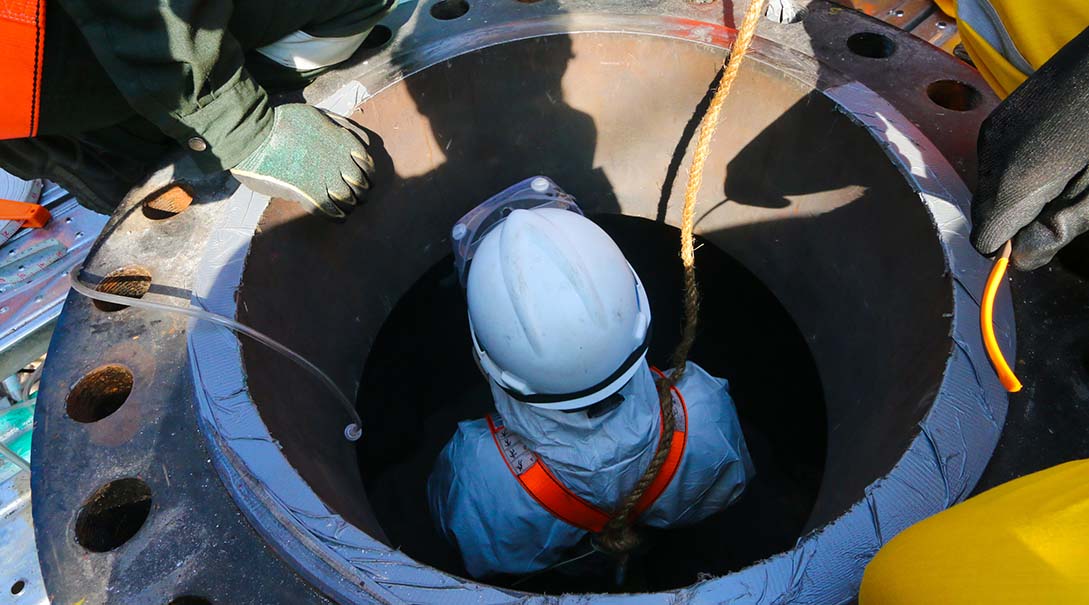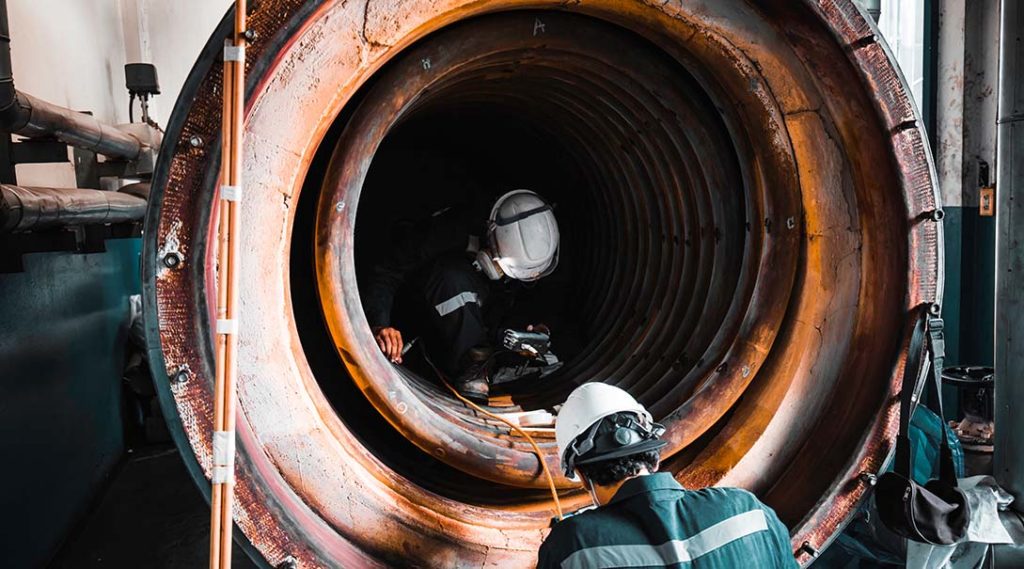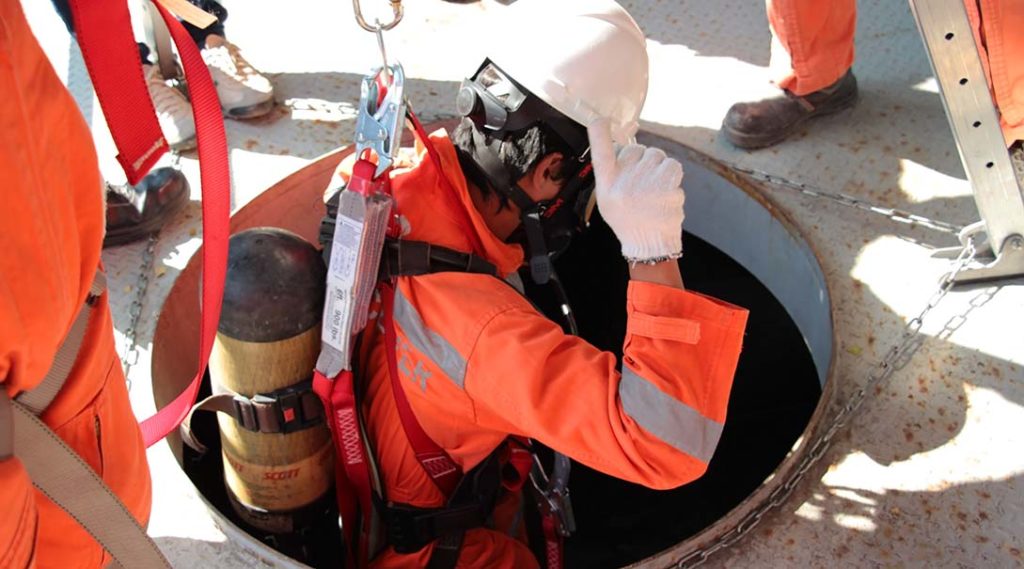In the power plant industry, confined spaces pose some of the most harmful hazards, which is why employers should provide their workers with confined space training before sending them into the field for work. Part of this training includes coming up with a confined space safety plan, which your company should implement in the event of an emergency.
Your confined space safety plan should include a rescue plan should workers become stuck or need immediate rescuing before caring for their injuries. Furthermore, providing employees with safety training and a safety plan for confined spaces prepares workers for the potential dangers of working in the field.
What Is a Confined Space Safety Plan?
Since confined spaces pose the most serious hazards, coming up with a plan for emergencies is crucial. There are multiple types of confined spaces, each posing a unique risk ranging from explosions and fires to exposure to hazardous chemicals. Each risk and scenario should be outlined and covered within your confined space safety plan.
Relying on first responder services is not always possible in the power plant industry. Often, only those with proper confined space training and more specifically, rescues training are fit to rescue another person from the danger of the confined space.
Since reliance on first responders is not an option, your safety plan needs to assess risks adequately. Part of evaluating the risks of a confined space is putting together a rescue team.
Your rescue team should be supplied with the proper rescue equipment and knowledge needed in the event of an emergency. If a hazard occurs, the rescue team is generally stationed outside of the confined space to rescue those inside more efficiently.
How Can Confined Space Planning Minimize Workplace Fatalities?
Confined space safety plans can save the lives of many workers when put in place and followed. Avoiding risks, overall, is key to preventing workplace fatalities. However, human error occurs – or even the unexpected. When developing your plan, it’s vital to consider the entering of a confined space and the extraction of a worker or workers. While each scenario can be unique, providing adequate direction on how to safely assess a risk and initiate rescue can help mitigate further risks, prevent additional injuries, and successfully rescue team members.
Permit-Required Confined Spaces (PRCS)
Permit-Required Confined Spaces (PRCS) is based on OSHA standards and expectations. According to PRCS, a confined space has material that could engulf an entrant, has the potential to have a hazardous atmosphere, could potentially trap someone who enters, and has other potential hazards.
Understanding each of these components could save someone’s life. If the confined space safety plan has gone over rescue plans regarding these events, those involved in a mission to a confined space are better prepared.
Providing employees with an in-depth confined space safety plan should provide them with enough protocols to deal with potential risks and hazards posed by confined spaces.
Confined Space Planning: Getting Started
When considering a confined space safety plan, it’s important to note the potential risks that each unique confined space holds. Due to the complexity and variety of potential risks involved, it’s important that your confined space safety plan contain in-depth descriptions of the confined space, the risks, and the potential rescue opportunities.
Knowledge is key to understanding the potential risks involved with confined spaces. Providing employees with the resources to prevent potentially fatal hazards from occurring is a must. However, sometimes risks and hazards occur randomly. Should this happen, having a plan that prepares for this type of incident can help prevent further damage and injuries – and fatalities.
Consider the potential risks and difficulties of retrieving an employee. For example, if a confined space collapses, an employee may be stuck; this means you should prepare the rescue team with the proper equipment to rescue those in the confined space.
Another step that should be taken as a precautionary measure when creating a confined space is planning for evacuation. You can do this by determining where to station your rescue team or finding an alternate exit if something is blocking the original one. Doing so will require measuring the entrance and the space while also checking oxygen levels.
Benefits of Confined Space Training and Rescue Services
The U.S. Occupational Safety & Health Administrations set out the requirements on which many safety specialists and employers can base their confined space safety plans. These regulations ensure that employees are safe and trained on proper rescue techniques and precautions when entering a confined space.
Salvation Safety provides comprehensive safety training and confined space safety plans and services to help companies ensure they are doing the most to keep their employees safe. We also offer additional on-site safety training services that educate employees on the risks involved in working at a power plant to prepare them for potential conditions and dangers they could face in the field.
Confined Space Safety Plan Opportunity
Providing the best confined space safety plan requires a comprehensive approach to identify and mitigate risks while also planning the rescue of workers without additional incidents. It also requires your company to remain OSHA compliant, as failure to do so will result in costly fees, penalties, and potential fatalities.
That’s why it’s crucial to work with a trusted confined space training and safety company. Salvation Safety takes the safety of your employees and company seriously. Our team of professionals works with you to devise a strategic, proactive, and comprehensive confined space safety and rescue plan based on your business needs – all while ensuring you remain OSHA compliant. Contact us to discuss your training options and start developing a plan today.





